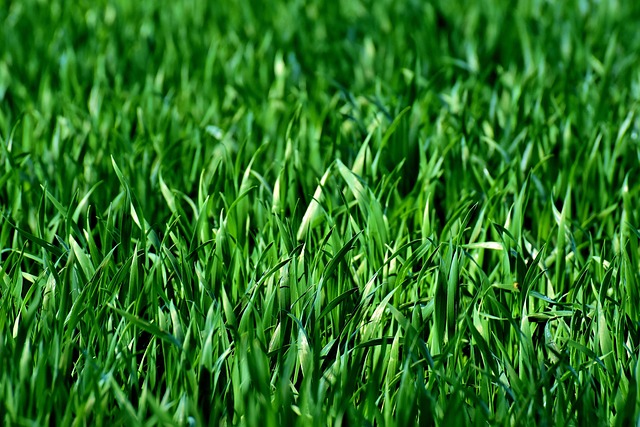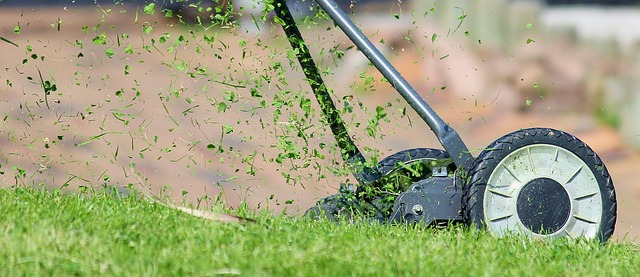In Colorado Springs, identify common lawn fungi like brown patch and dollar spot through visual symptoms and lab analysis for effective management. Early detection is crucial due to the region's warm, moist climate. Organic strategies include improved air circulation, water drainage, natural fungicides, and fostering beneficial soil microorganisms to prevent fungal infections.
In the vibrant landscape of Colorado Springs, proper lawn care extends beyond mere aesthetics. Recognizing common lawn fungus is crucial for effective pest management. This article guides you through identifying and addressing fungal infections specific to this region. Learn how to assess lawn damage caused by these insidious invaders and implement organic strategies to mitigate their impact. By understanding the unique challenges posed by Colorado Springs’ environment, you’ll be equipped to maintain a healthy, thriving lawn.
- Recognizing Common Lawn Fungus In Colorado Springs
- Assessing Lawn Damage Caused By Fungal Infections
- Implementing Effective Organic Pest Management Strategies
Recognizing Common Lawn Fungus In Colorado Springs

In Colorado Springs, recognizing common lawn fungus is a crucial step in effective pest management. Some of the most prevalent fungal issues include brown patch, which appears as circular patches of dead or dying grass, and dollar spot, marked by small, distinct spots on the lawn’s foliage. These fungi thrive in warm, moist conditions, characteristic of Colorado Springs’ climate during certain times of the year.
Identifying these fungi early is key to minimizing damage. Homeowners should look for specific symptoms like discolored grass, thinning vegetation, and web-like fungal growth. Regularly inspecting the lawn, especially after periods of prolonged moisture, can help in timely intervention. Proper management strategies, such as maintaining adequate air circulation, reducing excessive watering, and applying fungicides when necessary, are essential to combat these fungal invaders effectively.
Assessing Lawn Damage Caused By Fungal Infections

Identifying lawn fungus in Colorado Springs begins with assessing any visible damage to your lawn. Look for patches of dead or discolored grass, which could indicate a fungal infection. These areas might appear brown, yellow, or even white, and may be spotty or patchy in distribution. Carefully examine the grass blades for signs of mold or mildew, as these are telltale symptoms of fungal activity. In addition to visual cues, consider any unusual odors emanating from the lawn, as certain fungi produce distinct aromas.
If you suspect a fungal infection, further assessment may involve taking soil samples and sending them to a lab for analysis. This process can help pinpoint specific fungus species causing the damage and guide targeted treatment strategies. Prompt identification is crucial in Colorado Springs due to the region’s climate and environmental conditions that favor fungal growth, making effective pest management plans essential to maintain a healthy lawn.
Implementing Effective Organic Pest Management Strategies

Implementing organic pest management strategies is a beneficial approach for maintaining a healthy lawn, especially in areas like Colorado Springs where identifying lawn fungus can be crucial. Instead of relying on synthetic chemicals, homeowners and landscapers can employ natural methods to control pests and maintain grass integrity. One key step is recognizing the early signs of fungal infections, which are common in the region’s climate. Residents should look out for discolored patches, wilting grass, and a general decline in lawn health, indicating potential fungus like Drechsia or Pythium.
Once identified, organic management techniques can be deployed. These include improving air circulation through proper mowing practices, ensuring adequate water drainage to prevent moisture-prone areas where fungi thrive, and applying organic fungicides derived from natural compounds. Maintaining a balanced soil ecosystem with beneficial microorganisms also strengthens the lawn’s resistance against fungal diseases.
In identifying and managing lawn fungus in Colorado Springs, proactive steps are key. By recognizing common fungal infections early, assessing their damage, and implementing organic pest management strategies, homeowners can effectively maintain healthy lawns. These sustainable practices not only protect your landscape but also contribute to a greener, more eco-friendly environment. Remember, when it comes to tackling lawn pests, knowledge is power, and with the right approach, you can achieve a vibrant, thriving yard.
